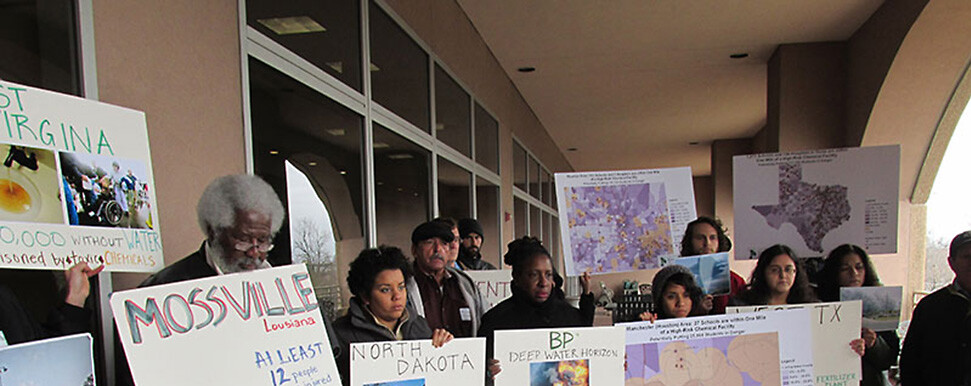
Media
October 19, 2017Report: Environmental Justice for Delaware - Mitigating Toxic Pollution in New Castle County Communities
Read the press release here, the executive summary here, or go straight to the report, here.
‘Environmental Justice for Delaware’, examines the health and safety risks for seven communities in an industrial corridor of Delaware’s New Castle County—an area that is home to major polluting industrial sources as well as facilities that use large quantities of toxic, flammable, or explosive chemicals. The communities studied in the report have higher ratios of people of color and/or people living in poverty than the Delaware average, and the report compares health risks in these communities to a nearby, predominantly White and more affluent community—as well as Delaware residents overall.
The risk of developing cancers and respiratory diseases in these neighborhoods was also compared to mapping information showing their proximity to industrial sources of pollution linked to these diseases.
The report then considers the potential cumulative impacts from these multiple, overlapping health and safety issues:
- Risk of cancer and potential for respiratory illnesses affecting residents in the communities stemming from toxic outdoor air pollution;
- Proximity to facilities included in Environmental Protection Agency’s (EPA’s) Risk Management Program (RMP) that use large quantities of toxic, flammable, or explosive chemicals and pose a high risk of a catastrophic disaster to large numbers of nearby residents;
- Proximity to major industrial pollution sources that report their toxic chemical emissions in the EPA Toxics Release Inventory (TRI);
- And proximity to contaminated hazardous waste sites listed in EPA’s Brownfield and Superfund Programs.
Mapping information conducted for this report found that the Southbridge neighborhood of Wilmington has 48 EPA listed Brownfields (more than half of all brownfields in Delaware), 13 facilities catalogued in EPA’s TRI, four EPA listed Superfund sites, two facilities which pose the risk of catastrophic disasters and are regulated under EPA’s RMP program, the Port of Wilmington which emits soot and other air pollutants, and multiple waste disposal facilities—all within the neighborhood or less than one mile away.
The report urges local, state, and federal decision-makers to reduce harms related to industrial toxic pollution and mitigate its disproportionate impacts on environmental justice communities by:
- Requiring facilities which could release large amounts of poisonous gas or risk a catastrophic explosion to use inherently safer chemicals and processes where possible;
- Require these same facilities to share information with first-responders and local communities on their hazards and processes essential to emergency preparedness and disaster planning—so people may effectively prepare for any accidents;
- Require large chemical facilities to monitor and share information on all toxic emissions;
- Protect people by not allowing new hazardous chemical facilities near homes and schools, and prevent new homes and schools from being built near existing hazardous facilities;
- Require comprehensive assessment and mitigation plans focusing on the cumulative health-impacts of the multiple, overlapping exposures and risks these communities face;
- Strengthen enforcement of existing environmental and workplace health and safety regulations;
- Adopt and enforce strict motor vehicle emission standards and limit heavy duty truck traffic and idling in residential areas;
- Shift our energy and transportation infrastructure away from fossil-fuel systems and toward clean energy, which will help mitigate and reduce the disproportionate health impacts these communities suffer throughout the chemical and energy lifecycles. Reducing fossil-fuels use and shifting to clean energy can reduce the need for dangerous chemicals and processes and prevent disasters, cut industry and transportation related pollution linked to cancers and respiratory diseases, reduce the creation of contaminated sites, and create more vibrant, robust, and equitable communities.
A number of national, nonprofit organizations and local community groups held a press conference to release ‘Environmental Justice for Delaware’ at a community center in Southbridge, Delaware, including the Union Concerned Scientists, the Environmental Justice Health Alliance, Delaware Sierra Club, and Delaware Concerned Residents for Environmental Justice.
Read the press release here, the executive summary here, or go straight to the report, here.
